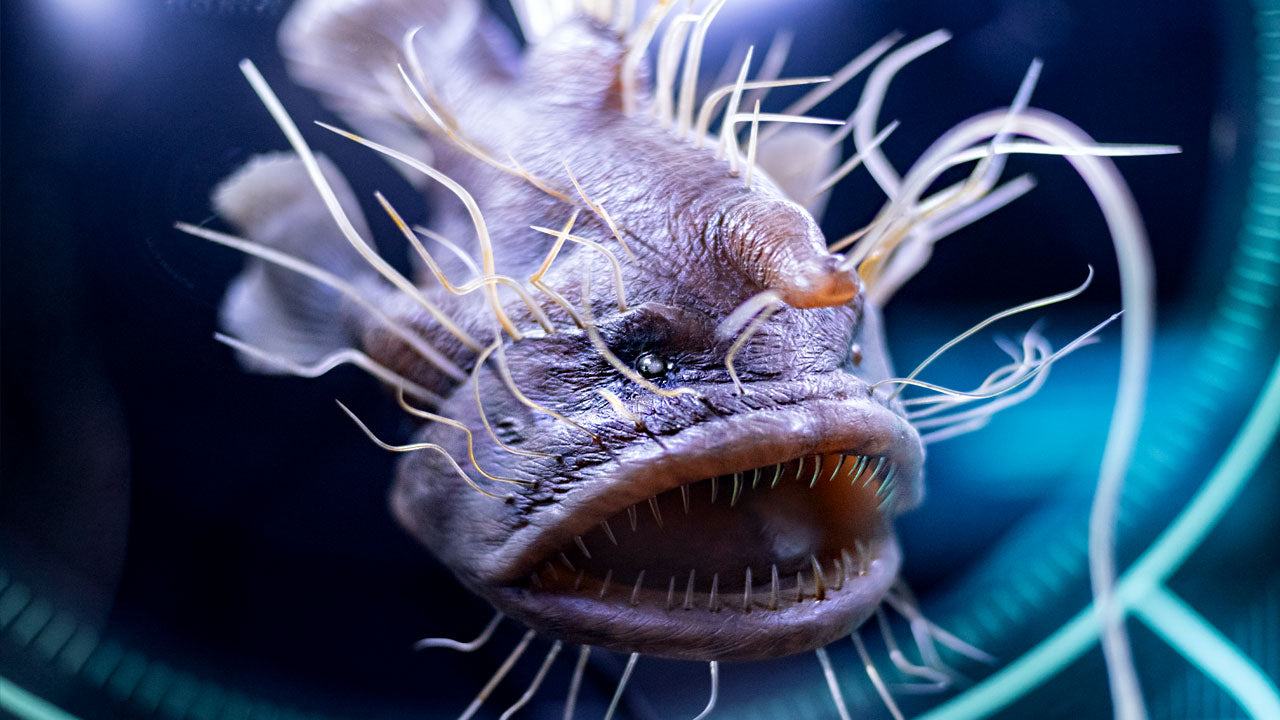The Gentle Giants: Fascinating Whale Shark Facts

August 30th is known worldwide as an International Whale Shark Day. Started in 2012 this special day was created to support whale shark conservation and help people learn more about our finned friends. In celebration, we have decided to dedicate this article to all things whale shark and share a few facts about these amazing creatures with you.
Physical Features
The whale shark is not only the largest shark but also the biggest fish in the ocean. On average, whale sharks grow to about 18-32.5 feet (5.5-10 meters) long. The maximum recorded length is 41.5 feet (12.6 meters). For comparison, that’s more than the length of a school bus! Certainly, these gentle marine giants are not hard to spot, but just in case you are ever in doubt, here are a few prominent features that will help you identify a whale shark. The head of a whale shark is flattened and has a blunt snout. The huge mouth, located towards the end of the snout, can open about 5 feet (1.5 meters). Inside there are 300-350 rows of teeth and ten pairs of useful pads to filter the food. Short barbels, whisker-like sensory organs, protrude from the whale shark’s nostrils. The fish’s back and sides are gray to brown with white spots and pale stripes. Its belly is white. Just like many pelagic sharks, whale shark has one pair of dorsal fins (one larger than the other) and one pair of pectoral fins as well as a caudal fin.
In addition to their enormous size, whale sharks have won the title of an animal with the thickest skin. It can be up to 4 inches (10 centimeters) thick and has two layers. The bottom layer is composed of muscles, sensory nerve cells, and blood vessels, while the top layer is made up of dead cells from the bottom layer. Like other sharks, whale sharks have toothy projections called dermal denticles, or skin teeth, covering their bodies. These help to reduce drag and keep the shark clean.

Habitat
Preferring warm waters, whale sharks populate all temperate and tropical oceans around the world, with the exception of the Mediterranean Sea. Every summer they are known to migrate large distances to the nutrient-rich waters near the Yucatan Peninsula of Mexico. Other hot spots include Belize, Japan, Honduras, South Africa, Australia, the Galapagos, and Seychelles. The predominantly male population (almost 70% based on several reports), gather by the hundreds to feed on plankton.
Although whale sharks spend the majority of their time in shallow waters in coastal areas, they have been observed to dive as deep as 4000 feet (1220 meters) below the surface.
Diet
The whale shark is one of only three filter-feeding sharks. The others include basking sharks and megamouth sharks. They feed by sucking large amounts of water, and all that comes with it, through their mouths and expelling it through the gills. Over 1,500 gallons of water can pass through the gills of one whale shark every hour! What’s left behind - plankton, squid, shrimp, fish eggs, small fish, algae and other marine plant material, is caught by the shark’s gill rakers and then swallowed.
Threats
Despite their size, whale sharks are not free from predators in their natural habitat. Orcas, blue sharks, white sharks and blue marlin attack mainly young vulnerable individuals. Humans, however, are the biggest threat to whale shark survival. Due to biological characteristics, such as their non-aggressive behavior, longevity, and slow growth, whale sharks are highly susceptible to exploitation. They are commercially fished in numerous locations around the world and can be victims of bycatch. Demand for their meat, fins, and oil remains a threat to the species, particularly by unregulated fisheries.
Some other threats whale sharks face include entanglement in fishing nets, boat strikes and ingestion of marine debris and microplastics.
Overall, the whale shark population has declined by over 50 percent in the past 75 years. In 2016, the whale sharks were downgraded from Vulnerable to Endangered on the IUCN (World Conservation Union) Red List of Threatened Species.
Did You Know
1. Similar to human fingerprints, whale sharks have a unique pattern of spots on their skin, which allow individual sharks to be identified.
2. Although neither mating nor pupping of whale sharks has ever been observed, they are believed to have the most shark pups in a single litter. One whale shark captured in 1966 was found to have 301 eggs! All pups were found to be well-formed inside their eggs, averaging about 20 inches in length.
3. Whales sharks are highly migratory but move very slowly, cruising at 2.3 miles (3.7 kilometers) per hour.
4. You can adopt a whale shark through one of the conservation organizations, such as Oceana or WWF. The adoption is, of course, symbolic, but presents a great way to help make the world's oceans healthier and safer.
5. Some whale sharks have Twitter accounts. Rocky (@WhaleSharkRocky), for example, is the first satellite tagged whale shark in the Northwest Atlantic. He tweets links to various articles on shark conservation as well as cute pictures of whale sharks. Domino (@Wheres_Domino), another live-tweeting whale shark, tweets his location and the location of his friends whenever the tags transmit. He also answers people’s questions about whale sharks and associated marine conservation issues.




